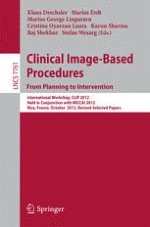2013 | Buch
Clinical Image-Based Procedures. From Planning to Intervention
International Workshop, CLIP 2012, Held in Conjunction with MICCAI 2012, Nice, France, October 5, 2012, Revised Selected Papers
herausgegeben von: Klaus Drechsler, Marius Erdt, Marius George Linguraru, Cristina Oyarzun Laura, Karun Sharma, Raj Shekhar, Stefan Wesarg
Verlag: Springer Berlin Heidelberg
Buchreihe : Lecture Notes in Computer Science
